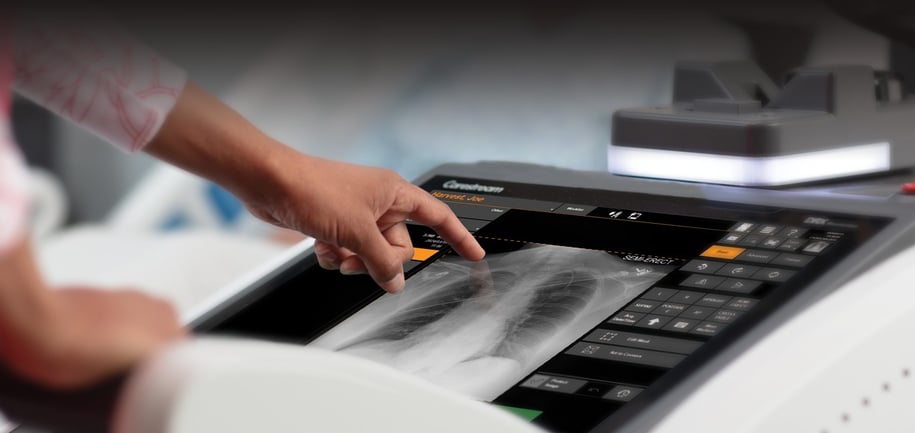Radiology Revolution: The Latest in X-Ray Technology
Welcome to our exploration of the exciting advancements in X-ray technology! As a cornerstone of modern medicine, X-ray imaging has seen remarkable transformations that enhance diagnostic accuracy and patient care. In this post, we will delve into the latest innovations, the role of artificial intelligence, and the impact of these changes on healthcare.
4/7/20252 min read


The Shift to Digital Imaging
One of the most significant changes in radiology is the transition from traditional film X-rays to digital imaging. This shift has brought numerous benefits that are transforming patient experiences and diagnostic processes:
Reduced Radiation Exposure: Digital X-ray systems use advanced sensors to capture images with less radiation than traditional methods. This reduction is crucial for patient safety, particularly for vulnerable populations such as children and pregnant women.
Immediate Image Access: With digital imaging, radiologists can access images instantly through secure networks. This expedites the diagnostic process, allowing healthcare providers to make quicker clinical decisions, which is especially critical in emergency situations.
Improved Image Quality: Digital images offer greater detail and clarity, allowing radiologists to detect subtle abnormalities that might be missed with film. Enhanced contrast and the ability to adjust brightness and contrast post-capture contribute to more accurate interpretations.
Environmentally Friendly: Transitioning to digital systems eliminates the need for chemical processing of film, reducing hazardous waste and contributing to more sustainable healthcare practices.
The Role of Artificial Intelligence
Artificial intelligence (AI) is revolutionizing the field of radiology by transforming how X-ray images are analyzed. Here are some key areas where AI is making a significant impact:
Enhanced Image Analysis: AI algorithms can process thousands of images rapidly, identifying patterns and anomalies that may be overlooked by the human eye. This capability not only improves diagnostic accuracy but also assists in the detection of early-stage diseases, such as lung cancer and fractures.
Workflow Efficiency: AI tools can prioritize cases based on urgency, allowing radiologists to focus on critical cases first. For instance, algorithms can flag abnormal findings, ensuring that urgent conditions are addressed promptly.
Training and Support: AI is also being utilized in training programs for radiologists. By providing feedback and analyzing performance, AI tools can enhance learning and improve diagnostic skills over time.
Integration with Electronic Health Records (EHRs): AI can streamline workflows by integrating X-ray findings with patient EHRs, facilitating comprehensive care management and improving communication among healthcare providers.
Recent Research and Developments
Recent studies continue to underscore the effectiveness of new X-ray techniques. For example:
Enhanced Detection Rates: Advanced imaging technologies have shown improved detection rates for conditions like pneumonia and fractures. A recent clinical trial found that integrating AI with X-ray imaging increased diagnostic accuracy by up to 20%, showcasing the potential of these innovations in clinical practice.
Longitudinal Studies: Research has indicated that regular use of advanced X-ray imaging can lead to better long-term patient outcomes, particularly in managing chronic conditions like osteoarthritis.
Innovative Imaging Techniques: Developments in 3D X-ray imaging and digital tomosynthesis are enabling radiologists to create three-dimensional reconstructions of anatomical structures, enhancing the visualization of complex conditions.
Patient-Centric Innovations
The evolution of X-ray technology is not just about improving imaging quality; it also emphasizes enhancing the overall patient experience. Key innovations include:
Comfort and Design: Newer X-ray machines are designed with patient comfort in mind. Features like adjustable positioning, soft lighting, and user-friendly interfaces help reduce anxiety, especially for pediatric patients.
Reduced Need for Repeat Scans: Advances in imaging techniques can minimize the need for repeat scans by improving initial diagnostic accuracy. This not only saves time but also reduces patient exposure to radiation.
Patient Education Tools: Many facilities now offer educational resources to help patients understand the purpose of their X-rays, what to expect during the procedure, and how the results will be used in their treatment plans.
Reference Website Links:
Radiological Society of North America (RSNA)
American College of Radiology (ACR)
National Institutes of Health (NIH)
American Roentgen Ray Society (ARRS)
Health Imaging
